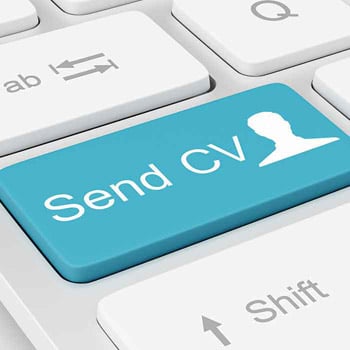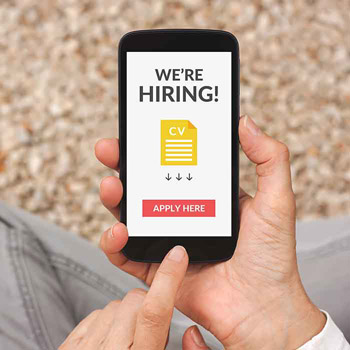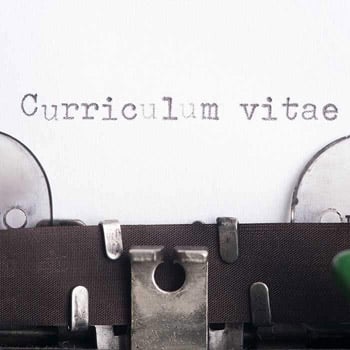Your CV is the most important tool that you have to impress your potential employer. Know how to write a CV, and you’ll be on your way to securing the job of your dreams. Here is expert advice from one of the premier recruitment agencies in Singapore.

How to write a resume
There are many elements that you need to consider when crafting the perfect resume. Whether you are setting out in your job search to write your very first resume or you’ve decided to re-write an existing resume, you may have many questions such as, “What is a resume?”, “How long should a resume be?” and “What information should I include?” You also have to consider how to tailor your resume and lay it out, as well as consider what format it should take, be it a digital resume or a more traditional form.
We’ve created the definitive guide to crafting the perfect resume. From how to write your resume; to knowing what you should include and exclude; to tips on how to lay out and tailor your resume - we’ll help you create the perfect resume that will get you the job you’ve been dreaming of.

What is a CV?
A CV is a written document of everything that relates to your work history. Your CV can include your experience, skills, achievements, education and qualifications. As your CV is often the first impression that your potential employer will have of you, it’s also one of the most important documents that you will ever create.
Your CV needs to be up to date, meticulously correct, and it’s essential to land a job - you can’t/won’t secure a first interview without it.
CV stands for Curriculum Vitae, which is Latin for ‘Course of life’. Technically, a resume is generally a shorter account of professional and educational history; whereas a CV is longer than a resume and more in depth, covering professional accomplishments, awards and recognitions.

How long should a resume be?
Your resume should be no longer than 3-4 pages long. If you are a student, you may not yet have a great deal of experience, so 1-2 pages is completely acceptable.
If you have several years’ worth of experience and accomplishments, however, it can be a challenge to keep it within the 3-4 page limit when writing a resume.
Remember that truly great resumes are short and succinct – so be sure to follow our guidelines as to what to include and exclude in your resume.
What is the best resume font?
Every candidate wants to put their best font forward, particularly when it comes to their resume. Just like you shouldn't begin your resume with your "Activities and interests" section or allow it to creep onto five pages, the best resume font is one that covers a few bases.
Here are the best fonts for resume writing - see how they weigh in with your favourites.
How to write a career objective
While often overlooked, career objectives are one of the most important parts of your resume as they complement your experience and skills and give prospective employers a sense of your work-related ambitions.
They don’t need to be particularly long to make an impact, but they do need to be well considered and well executed to be both meaningful and impressive.
Here are our tips on writing a career objective that wows every employer you encounter.
Send us your resume
Our staffing specialists will review your resume and contact you if we find a position that matches your qualifications.

How to 'do' a resume
Now that you know what to put on a resume, make your first draft. Then, take a break and review it a few days later. With fresh eyes, you can be more objective.
Consider: Are my achievements relevant for the role that I want to apply for? How can I demonstrate that my skills are of value to the organisation?
Tailor your resume, and edit it as necessary. Finally, get a trusted friend to proofread your resume. You can spend all the time in the world crafting what to write on a resume, but all that time can be wasted with just one spelling mistake.

How to tailor your resume
Tailoring is the key to making a good resume great. If you ensure that the information is personalised specifically to the role and employer, your resume will stand out from the pack.
First, start with researching the role and employer, and identify what achievements or skills you have that are relevant for the job at hand.
Then, bring those achievements and skills to the forefront using these key tips.
Resume format guide
Having a well-presented resume is critical to securing your perfect job. It's not enough to have great content; your resume layout needs to be easy-to-read, professional and appealing.
Your hiring manager will have seen hundreds of different resumes. That means that it’s important that you follow the general standard when laying out and ordering the information, to help them navigate the content and to ensure your experience stands out.
Skills to include on a resume
While the skills for your resume will vary according to the role you’re applying for, its seniority and the industry you work in, there are some skills that will always be valued by employers.
Here are our tips on the top 5 skills you should include on your resume.
Resume templates and samples
A resume template is used as a guide as to how a professional resume should be laid out. Resume templates also provide helpful information as to what content should be included in a resume. Often taking a ‘fill-in-the-blanks’ approach, a resume template can help to short-cut the time-intensive process that is creating the perfect resume.
There are thousands of resume templates and samples available online that can be downloaded and updated. Visit our resume templates page for resume samples including accounting and IT resumes.

How to make sure your resume stands out online
Increasingly, employers are interested to see your digital resume. A digital resume is, as it sounds, a resume that is readily accessible online via your own or a third-party platform.
In creating an online resume, there are many different options available. You can take a full ‘bells-and-whistles’ approach, and build your own website or create a video to create a big impact. Or you can leverage an existing networking platform, such as LinkedIn. You can also use a free online resume builder.
An online resume has the advantage of being discoverable by potential employers, but also has the disadvantage of not being tailored to suit a specific role that you may be going for. While they certainly have their place and will become increasingly more important, digital resumes are best used in conjunction with a more traditional, off-line resume.
You can never invest too much time in crafting the perfect resume. Even if you get the basics right, there are important nuances to consider that will help ensure that your resume gets to the top of the pile.





